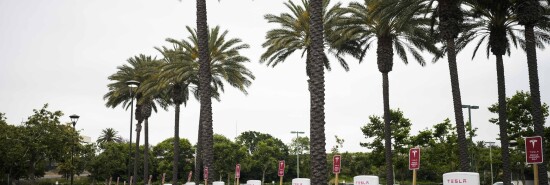
Electric vehicles are a bad bargain for everyone
Washington Examiner
Video Embed
If electric vehicles are as good as the Biden administration would have us believe, why are they so unpopular?
Two new reports this week show the folly of the government trying to force EVs onto unreceptive drivers. The cars are hideously expensive to produce and don’t sell even after they are subsidized.
GENERAL MOTORS SCALES BACK ELECTRIC VEHICLE TARGET
Consider the Oct. 25 study by the Texas Public Policy Foundation. It analyzed “how regulatory credits, hidden costs, and subsidies disguise the real cost” of EVs. In 2021, $22 billion of government subsidies paid for by American taxpayers hid nearly $49,000 of the cost of producing each EV. To repeat: $49,000 of hidden costs per vehicle. “These costs are borne by gasoline vehicle owners, taxpayers, and utility ratepayers, who are all paying a hefty price for someone else’s EV,” said Jason Isaac, the foundation’s energy policy specialist.
Even massively subsidized, average electric cars cost $22,000 more than ordinary cars with gasoline engines. These expensive and unwanted vehicles don’t make up for their extra costs by being cheaper to operate. Back-end operating subsidies, which are different from manufacturing subsidies, reduce the direct cost of electricity to drivers to make it like buying gas at $1.21 per gallon, but the hidden costs of charging equipment and charging losses make the real cost $1.38 per gallon.
It’s also not even clear if the nation has the electricity capacity to handle the shift to a market only selling electric vehicles, as President Joe Biden is trying to mandate by 2035. This is especially so with Biden’s restrictions on the development and distribution of coal and natural gas. Volatility of, and strain on, regional and national electric grids could become a serious problem if all cars need to be regularly recharged.
The Texas study does not even include costs for battery replacements and disposal. Nor does it venture to suggest that the mining of lithium for batteries can keep up with demand. It doesn’t look at the environmental costs of lithium mining, which can pollute air and water with heavy metals, massively erode soil, use copious water and energy in mining, and disrupt wildlife habitats.
Even with all the subsidies and mandates, consumers aren’t buying the EV fairy story. On Oct. 24, General Motors CEO Mary Barra published a letter to shareholders in which, amid a lot of happy talk about the company’s profitability, she admitted that the electric vehicle business was lagging.
“We are also moderating the acceleration of EV production in North America,” she wrote, “to protect our pricing, adjust to slower near-term growth in demand, and implement engineering efficiency and other improvements that will make our vehicles less expensive to produce, and more profitable.”
In other words, aside from the prestige Tesla brand, the public isn’t buying electric vehicles. In late September, Ford Motors announced it was halting work on a battery plant in Michigan, and no wonder: In the first six months of 2023, Tesla outsold its next 19 EV competitors, combined, by a nearly 10-1 margin.
Left-wing insistence that the government subsidize and mandate EVs ignores the significant advantages of hybrid vehicles. Even with all the government subsidies for EVs, unsubsidized hybrids command a larger share of the market. Hybrids use batteries so much smaller that Toyota says 90 hybrid batteries use no more raw materials (lithium, cobalt, graphite, and nickel) than a single EV battery. The Japanese automaker writes, “the overall carbon reduction of those 90 hybrids over their lifetime is 37 times as much as a single battery-electric vehicle.”
CLICK HERE TO READ MORE FROM THE WASHINGTON EXAMINER
Hybrids are far easier to operate because their tanks can be filled at the pump in just minutes, compared to up to an hour to recharge most EVs.
The left-wing fetish for EVs is wrongheaded, especially when it involves government command and expensive subsidies. The government should get out of the way and let the market for hybrids work. Both American wallets and the environment would surely benefit.
